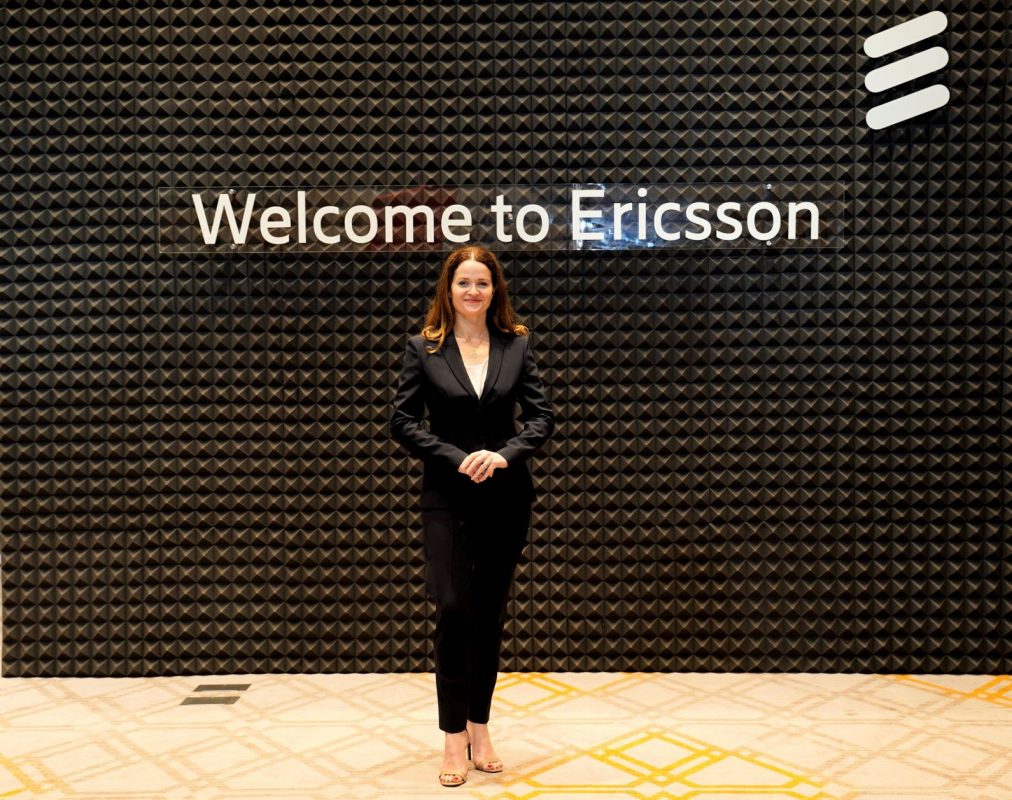
Information Technology Press Releases Thursday December 24, 2020 08:23
Bangkok–24 Dec–FAQ
Ericsson (NASDAQ: ERIC) projects that four out of every ten mobile subscriptions in 2026 will be 5G. This forecast is included in the latest edition of the Ericsson Mobility Report. Current 5G uptake in subscriptions and population coverage confirms the technology as deploying the fastest of any generation of mobile connectivity. The report estimates that by the end of 2020, more than 1 billion people – 15 percent of the world’s population – will live in an area that has 5G coverage rolled out. 220 million global 5G subscriptions are also expected by the end of this year. In 2026, 60 percent of the world’s population will have access to 5G coverage, with 5G subscriptions forecast to reach 3.5 billion, estimated to account for more than 50 percent of mobile data traffic at that time. In South East Asia and Oceania, 5G is predicted to be the second most popular technology in 2026, only behind LTE, surpassing 380 million subscriptions and accounting for 32 percent of all mobile subscriptions.
Nadine Allen, Head of Ericsson Thailand, says: “5G will enhance existing digital services and use cases like video streaming, sports streaming, mobile gaming and smart home services. Augmented Reality (AR) alone is likely to drive more than half of all overall immersive media revenues for service providers compared with other services like cloud gaming,VR content and in-venue digital services. AR gaming is likely to be the main initial driver for AR. Other application areas for AR, such as TV and video viewing, home planning and school and educational usage, will follow.””Being the first nation in Southeast Asia to roll out 5G, people in Thailand have already started to experience some of the key benefits of 5G for consumers. Meanwhile, Ericsson Thailand is working closely with the Royal Thai Government as well as the ecosystem players in Thailand to support the country’s digital transformation, which mainly involves Industry 4.0 and 5G for enterprises. The success of 5G in the consumer market will be crucial for service providers, underpinning the network expansion to enable them to also target new use cases for industries and enterprises.” In South East Asia and Oceania, total mobile data traffic continues to grow steadily with a compound annual growth rate (CAGR) of 33 percent for the forecast period. It is expected to reach 32EB per month in 2026, equivalent to 33GB per month per smartphone. Growth in mobile data consumption has translated into more diversified and generous data plans from mobile operators across different geographies. The second half of this year has also seen a number of commercial 5G launches in South East Asia and Oceania with live networks now in Australia, New Zealand and Thailand. Upcoming spectrum auctions planned for 2021 in countries like Vietnam and Malaysia will bring additional 5G deployments next year. The Ericsson Mobility report highlights why 5G success will not be limited to coverage or subscription numbers alone. Its value will also be determined by new use cases and applications, the first of which have already started to emerge. Critical IoT, intended for time-critical applications that demand data delivery within a specified time duration, will be introduced in 5G networks. This will enable a wide range of time-critical services for consumers, enterprises and public institutions across various sectors, with 5G public and dedicated networks. Cloud gaming is another emerging application category. The combined capabilities provided by 5G networks and edge compute technologies will enable game streaming services on smartphones to compete with a quality of experience (QoE) that is on par with PC or console counterparts, opening up for innovative, immersive games based on mobility.
According to the new Harnessing the 5G Consumer Potential report from Ericsson ConsumerLab, the 5G consumer market could be worth USD 31 trillion by 2030 globally, with communications service providers (CSPs) earning USD 3.7 trillion of that total – a figure that could increase further as new adjacent digital services opportunities arise. In South East Asia, Oceania and India the report estimates that CSPs could earn USD 297 bn in 5G-enabled consumer revenues by 2030. 79% of the total service provider 5G digital services revenue , estimated at 7.5B USD by 2030, will be driven by enhanced video and HiFi music. 5G digital services include video, music, gaming, augmented/virtual reality and consumer IoT services. Download the November 2020 edition of the Ericsson Mobility Report.










